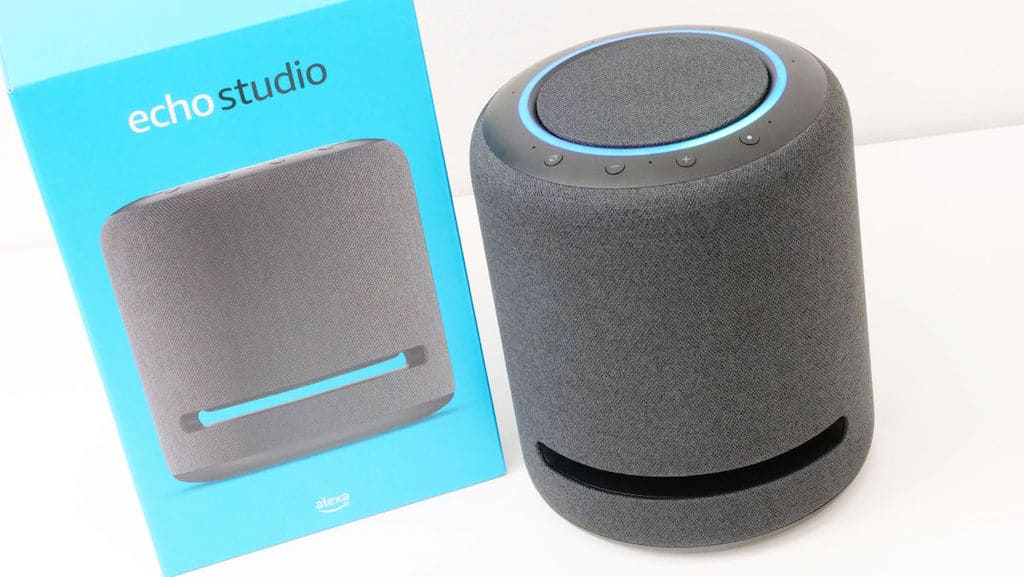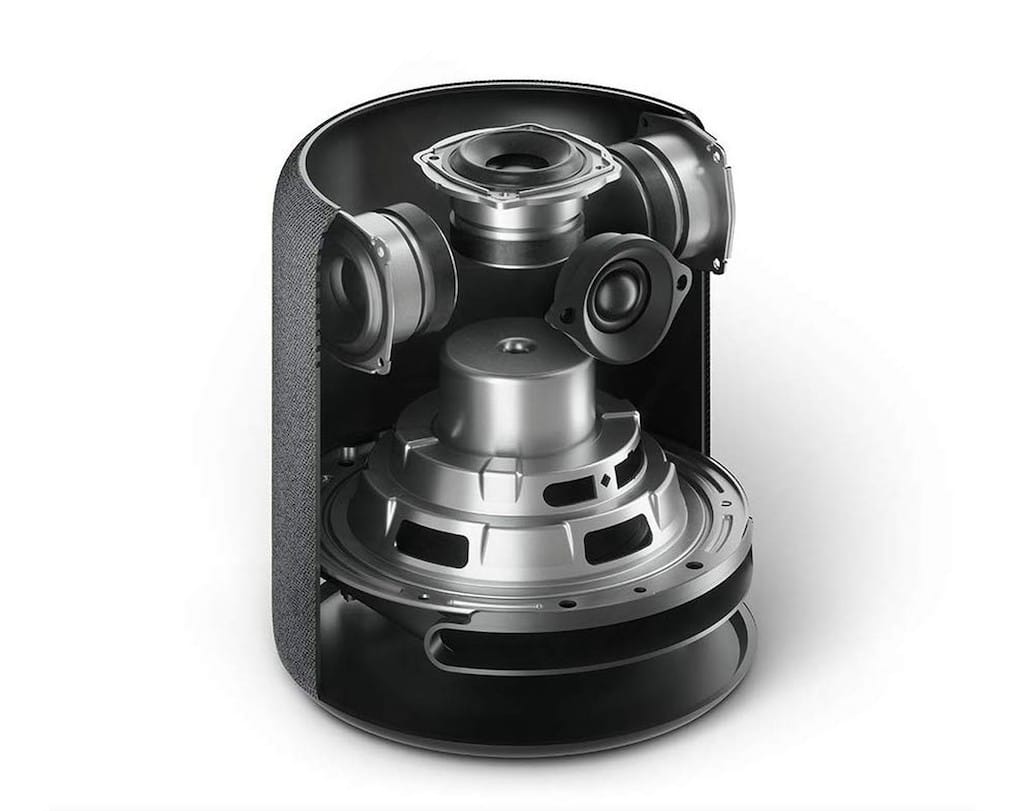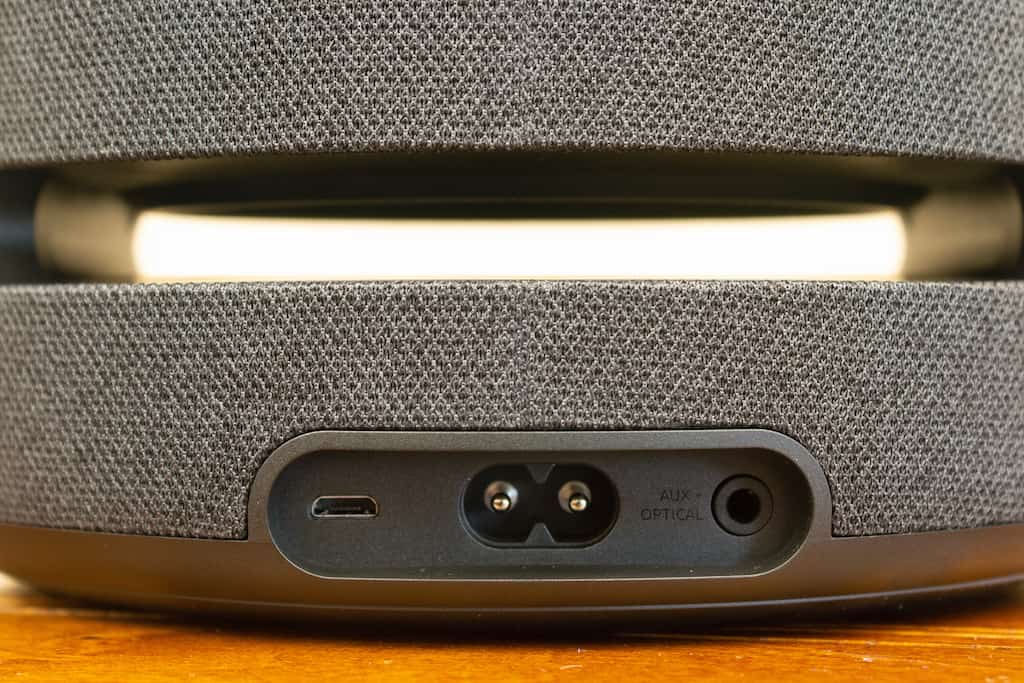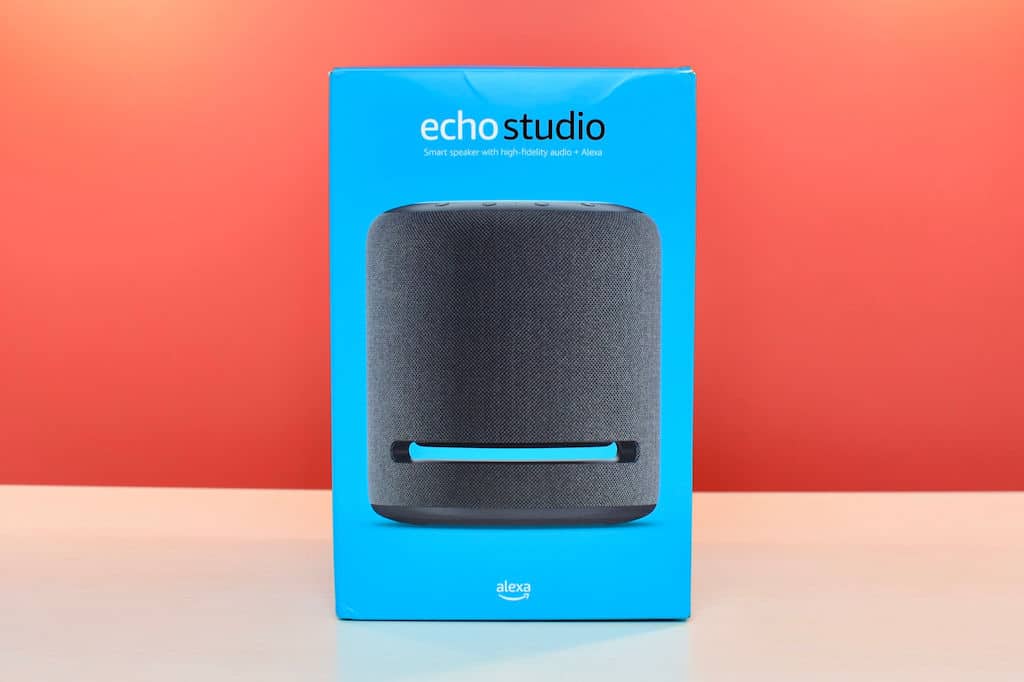Amazon Studio REVIEW
Summary
Amazon Studio REVIEW
Amazon claims audiophile abilities for its premium Echo speaker, but how does it really rate? PAT PILCHER gets down and dirty with the Amazon Studio.
$359

 Thanks to its widespread availability, competitive sticker price and compatibility with most smart home gear, Amazon has gained a solid foothold in the New Zealand smart speaker market. Aside from turning smart lights on or off, or letting you see who’s at the door, the other use for smart speakers – streaming music – has been an Achilles heel for Amazon’s Echo range as their audio was never a strong point.
Thanks to its widespread availability, competitive sticker price and compatibility with most smart home gear, Amazon has gained a solid foothold in the New Zealand smart speaker market. Aside from turning smart lights on or off, or letting you see who’s at the door, the other use for smart speakers – streaming music – has been an Achilles heel for Amazon’s Echo range as their audio was never a strong point.
Amazon reckons this is changing for the better with the Echo Studio. They say it promises to be the smart speaker of choice for audiophiles. It’s a bold claim, considering that the Echo Studio costs a fraction of what you’d pay for a half-decent amp and speakers.
Bold claims and raised eyebrows aside, we at Witchdoctor decided to put the Echo Studio through its paces to see just how good it really is. We were pleasantly surprised.
So, what gives the Echo Studio its audio chops?

First and foremost are upgrades to internal componentry, which theoretically allow the Echo Studio to deliver CD-quality/hi-res sound. Further helping things along, hi-res HD audio is now also available from Amazon Music. If that wasn’t enough, the Echo Studio is also able to deliver spatialised “3D audio” using music encoded in Sony’s 360 Reality Audio as well as Dolby Atmos.
As with home theatre setups, object-based soundtracks mean Atmos encoded audio mixes played through the Studio can put sounds above and around the listener. Pulling off this nifty trick sees the Echo Studio bouncing sound off the reflective surfaces in your room. It also introduces micro-delays to specific parts of an audio track, so they appear to envelop you. The mics used to pick up voice commands are also listening to its audio output, and these allow it to adapt the sound for your acoustic environment in real time on a per track basis. Clever, eh?
“Audio mixes played through the Studio can put sounds above and around the listener”
If streaming music you own (for instance, tuneage you’ve ripped from CD and stored on a NAS) is your thing, the good news is that the Studio will play nice with most audio codecs. These include AAC, FLAC, MP3, Dolby Digital, Dolby Digital Plus and so on. Its onboard DAC can decode tracks with up to 24-bit resolution at sampling rates as high as 48kHz. There’s also a dual-band Wi-Fi adapter onboard (2.4- and 5GHz), as well as support for Bluetooth (bizarrely, there is no support for aptX or aptX HD).

Design-wise, the Echo Studio resembles its earlier counterparts as if viewed in a circus mirror. Like the traditional Echo, the Studio is cylindrical. Still, instead of being a tall skinny tube, it has a larger diameter and a squat look. This is probably needed to accommodate all the extra drivers used to deliver its hi-fi goodness. Otherwise, it sports the same design language as previous Echo models, in that it is covered in a dark neutral fabric mesh.
“The Echo Studio can make use of hundreds of songs mixed as Dolby Atmos Music”
The extra speaker drivers tucked away inside take the form of two 5cm midrange speakers in a left-right configuration. There’s also a 25mm forward-facing centre tweeter, as well as a 5cm upward-firing midrange speaker and bass comes via a downward-firing 5.25in woofer. A Class D amplifier that delivers peak power output of 330 watts powers these speakers.
The speaker configuration means that the Echo Studio can make use of hundreds of songs mixed as Dolby Atmos Music. This gives audio elements noticeable positioning in the soundstage. Universal Music and Warner Music offer tracks encoded in Dolby Atmos. Sony’s format (360 Reality Audio) is also supported.

Abilities to deliver wiz-bang audio aside, the Studio is still an Amazon Echo. There are volume buttons on its top as well as a mic mute and there’s also the blue ring of light so you know when Alexa can hear you.
The Studio operates pretty much identically to its Echo siblings. Using a combination of music service subscriptions and the Echo skills and voice commands you can listen to streamed audio. As with other Echo models, you can set reminders, make phone calls and drive smart home widgets. Where the differences are immediately noticeable is when you power up the Studio for the first time. It blasts out test tones to analyse the acoustic properties of the room it’s in and tweaks internal audio settings. This only takes a few seconds and needs to be repeated if the Studio is moved to a different location.
“It blasts out test tones to analyse the acoustic properties of the room it’s in and tweaks internal audio settings”
While I could access EQ controls using the Alexa app on my phone, I was curious to note that these were not available via the Alexa web portal. It’s an odd omission. That said, the Studio’s flexibility when it came to wireless pairing impressed. I could, in theory, connect one or two Studio’s to an Amazon Fire TV Stick to deliver a substantial (and smart) upgrade to audio from my TV. Soundbar manufacturers should be more than a little worried.
But the big question is this: how does the Studio really sound?
Pumping out anything approaching half-decent audio, let alone immersive and convincingly directional sound will always be a challenge. Doing it with a single speaker is a mission impossible, or is it?

Firing up one of the many New Order ‘Confusion’ remixes saw the Studio showing off its sonic abilities. Bass was room-filling and rich, while highs and mids from cymbals and synths were delivered with aplomb.
Next was some classical in the form of Holst’s ‘Planet Suite’. It’s a complex piece with lots of moving parts and yet its sound stage felt both wide and high with strings sitting to the right of brass and woodwind. It was impressive work considering it was being belted out by a single speaker.
Firing up The Doors’ ‘Riders On The Storm’ showcased crisp highs and mids with little to no sign of any crossover holes. However, the bass was a lot less controlled and seemed slightly waffly compared to Holst’s planet suite. I guess this is perhaps more to do with the age of this analogue era recording than any audio faults with the Studio. (Witchdoctor’s resident hi-fi snob Gary Steel reckons the track sounds incredible coming out of his Martin Logan speakers though, so…)
“Bass was room-filling and rich, while highs and mids from cymbals and synths were delivered with aplomb”
Last (but by no means least), I rustled up some Dolby Atmos on Spotify, giving Eric Clapton’s unplugged acoustic ‘Layla’ a whirl. The soundstage felt very airy, and I’m guessing that phased audio and reflective surfaces added a distinct left and right sound field with a surprising amount of height. With Dolby Atmos, it felt like I was in the front row of a theatre watching the great man do his thing.
So, did the Studio impress? You bet! But does it live up to Amazon’s Audiophile claims? It sounds good, but not quite audiophile good. While its sound was filled with weighty bass, its sound was nowhere near as focused and controlled as my Theophany floor standers.
That’s perfectly understandable though, given the Echo Studio’s very reasonable $359 sticker price. It’s a fraction of what you’d need to pay for an audiophile-grade CD player, amp, speakers and cabling. Then there are all the smart speaker bits that the Alexa assistant brings to the party.
Dedicated high-end audiophiles will get sniffy about the Echo Studio, but it’s really not for them. For me, it’s not a case of one or the other, but appreciating that both full range hi-fi separates and modern audio gadgetry like the Echo Studio have unique aspects and different uses.
The sound out of most Echo devices in the past sounded at best average to okay. The Studio represents a seismic jump-shift in the Amazon Echo’s audio capabilities. When coupled with Amazon Music’s hi-res audio, the Echo Studio delivers audio that’s a definite step up compared to other smart speakers. Additionally, the Studio does double duty as a ZigBee hub and can connect to a load of smart home widgets. Rounding things out is the 3D audio support and the Alexa voice assistant. All told, it’s a combination that’s hard to beat. For these reasons, I’ve given it the big thumbs up and a 10/10.
TECH SPECS
Wi-fi: 2.4GHz/5GHz
Bluetooth: Yes
Inputs 3.5mm/mini SPIDIF
Dimensions (HxWxD) 21 x 18 x 18cm
Weight 3.5kg














